


Core Muscles
There are 3 groups of muscles that work together to hold the spine upright against gravity.
Research shows that the bones, cartilage, discs, and ligaments are much healthier and less likely to develop painful pathologies when the core muscles are symmetrically strong, flexible, well coordinated, and perform with excellent endurance.
When looking at muscle anatomy, it's important to understand two things: The fiber direction of the muscle is the direction that the muscle contracts, and every single muscle in our body begins and ends in a white gristly tendon. The red meaty part of the muscle is where the contractile tissue is, and it never attaches directly to bone.
Posterior Group
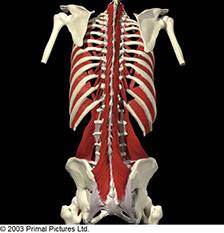
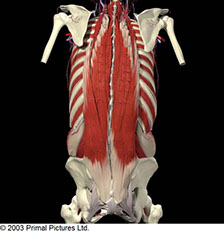
Erector Spinae
Long straps that maintain the rib cage over the pelvis
Multifidus
Overlapping short straps that control the individual bones
Lateral Group
Maintains
constant
tension for
postural
support
Transverse Abdominus
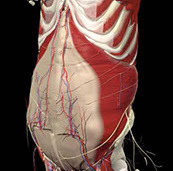
Internal
Oblique
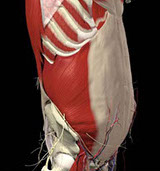
External
Oblique
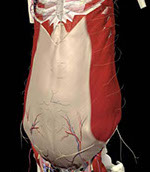
Generates
higher levels of tension for twisting, push, pull,
lifting
Anterior Group
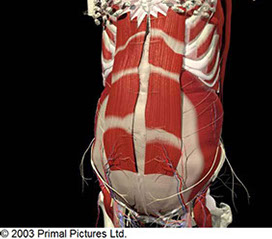
Trunk stabilization laying on back and assists Internal and External Obliques
Rectus
Abdominus
Which muscle is the most important?
All 3 groups of muscles are equally important. To lose the strength of any one muscle would weaken the support and control of the spine. This can result in excessive stress on the bones and connective tissue which in turn leads to inflammation and pathology. These muscles work together like a guy wire system on a baby tree. Each wire has a tension of support that is equal and opposite to the other guy wires. To lose one of those ropes would cause the tree to list.
The contents of BackPainExplained web site including the text, graphics, images, and other material are for informational purposes only. The content of this web site is not intended to be a substitute for professional medical advice, diagnosis, or treatment. Always seek advice of your physician or other qualified health professional with questions you may have regarding a medical condition. Do not delay seeking medical advice or disregard professional treatment advice because of something that you have read on BackPainExplained.
Call your physician or 911 if you think that you have a medical emergency. Reliance on any information within BackPainExplained web site is solely at your own risk.